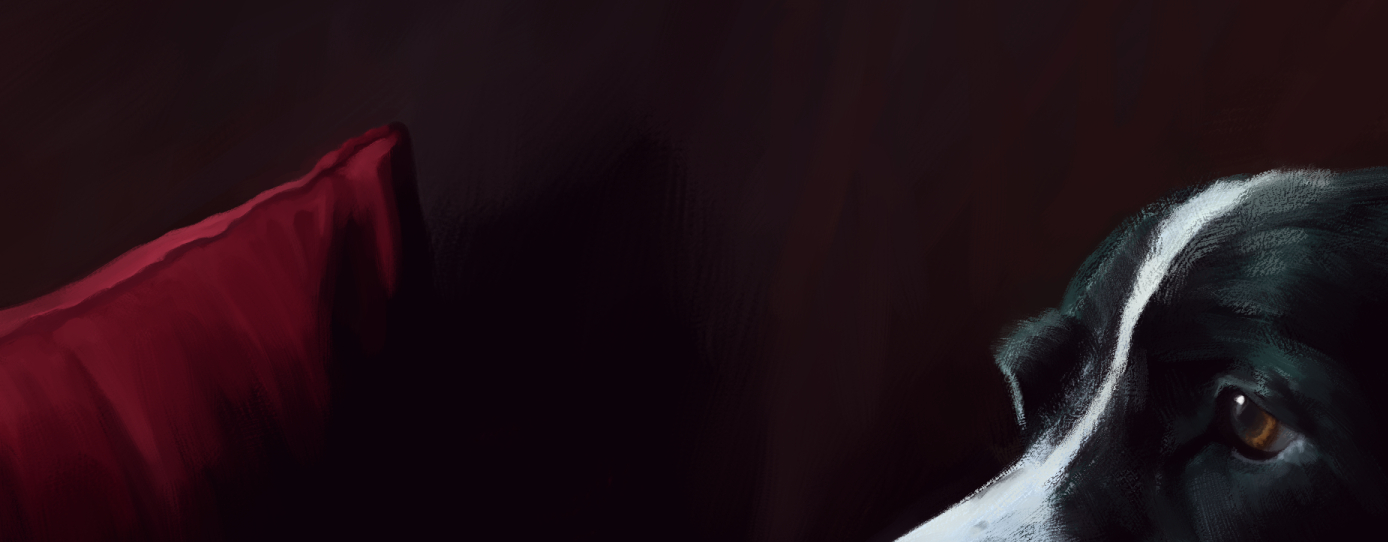
Despite having been an artist for a long time, I only got into painting studies quite late. Though by now, they have become not just a learning activity yielding satisfying results, but also a source of comfort for me. While I wouldn’t claim that discerning shapes, forms, colours and values from reference and putting them down onto a canvas with your own hands is easy, it does mean there’s something tangible you can work from. Be it a photo or a still life arrangement, if something feels off in your painting, you can compare, look just a little harder at how it should be, adjust and inch towards getting it right. There’s a certain reassurance in it for me that yes, you will be able to finish this and have it turn out ok.
What makes it even better is when the reference photo itself is already a joy to look at, giving me a real urge to paint it. To replicate the beauty in it, often showing something I’d have no access to, or too fleeting to paint from life. A source of many such photos is my friend Cri, regularly wowing us with her captures of birds, insects or in the case of this post’s painting, her dog Duke.
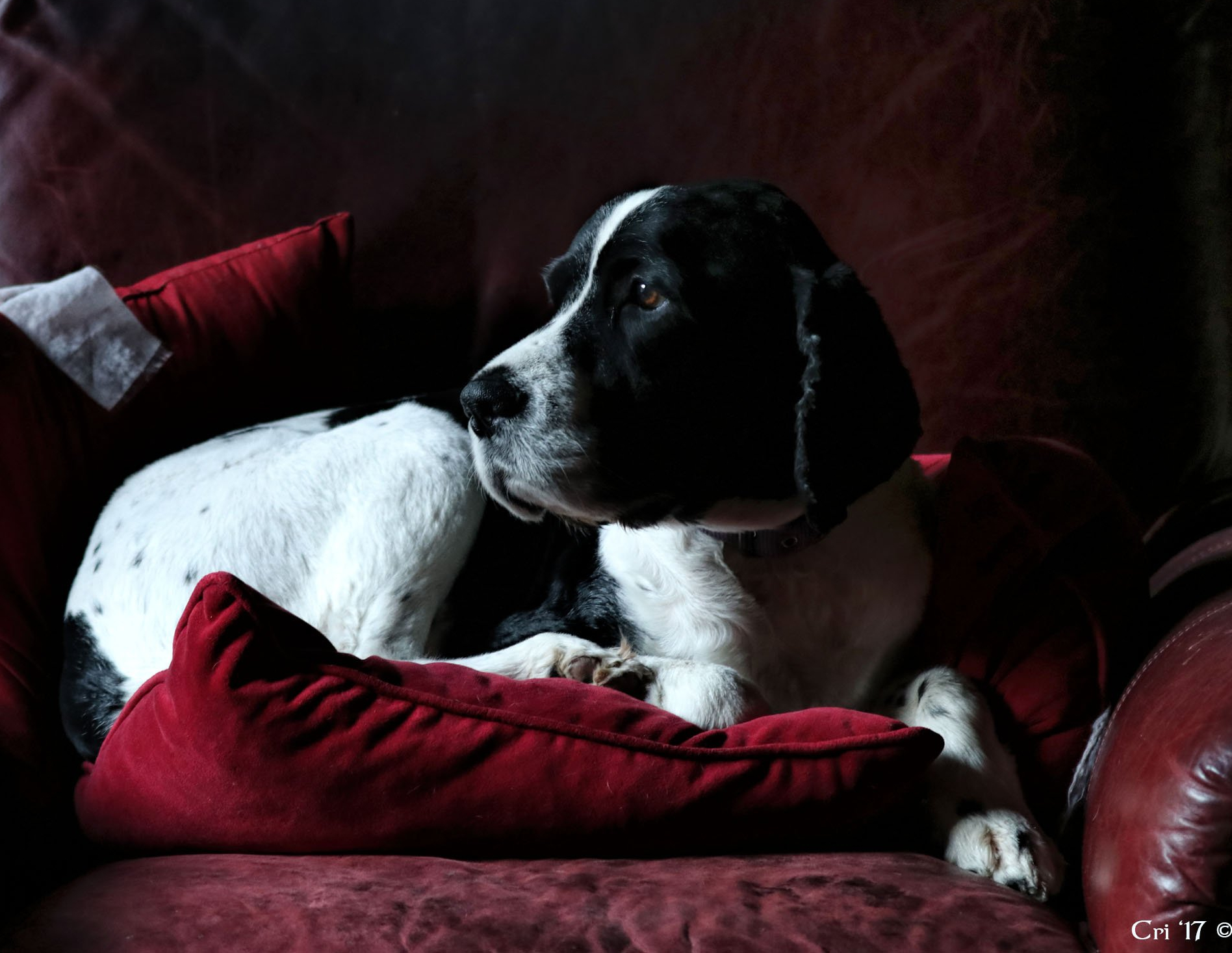
Which brings me back to the word ‘comfort’. Duke recently passed away and while that makes the occasion a sad one, I’m glad that I can use my skills as an artist to give comfort in the form of a memorial painting. Not only offering my condolences that way, but also celebrating the beauty of a beloved animal friend through my time spent portraying him with a (digital) brush. Hopefully you will not just find the breakdown of my painting process interesting, but also honour Duke by admiring what a handsome and regal boy he was.
As with any painting, or many things really, you start to work from big to small. It can be hard to pick the largest brush you’re able to and stick to it until you can no longer put down the shapes needed, but it’s a practice that will save you from the headaches and wastefulness of detailing too early. Even if that means your first stage will often look simplistic and to be honest, quite terrible.
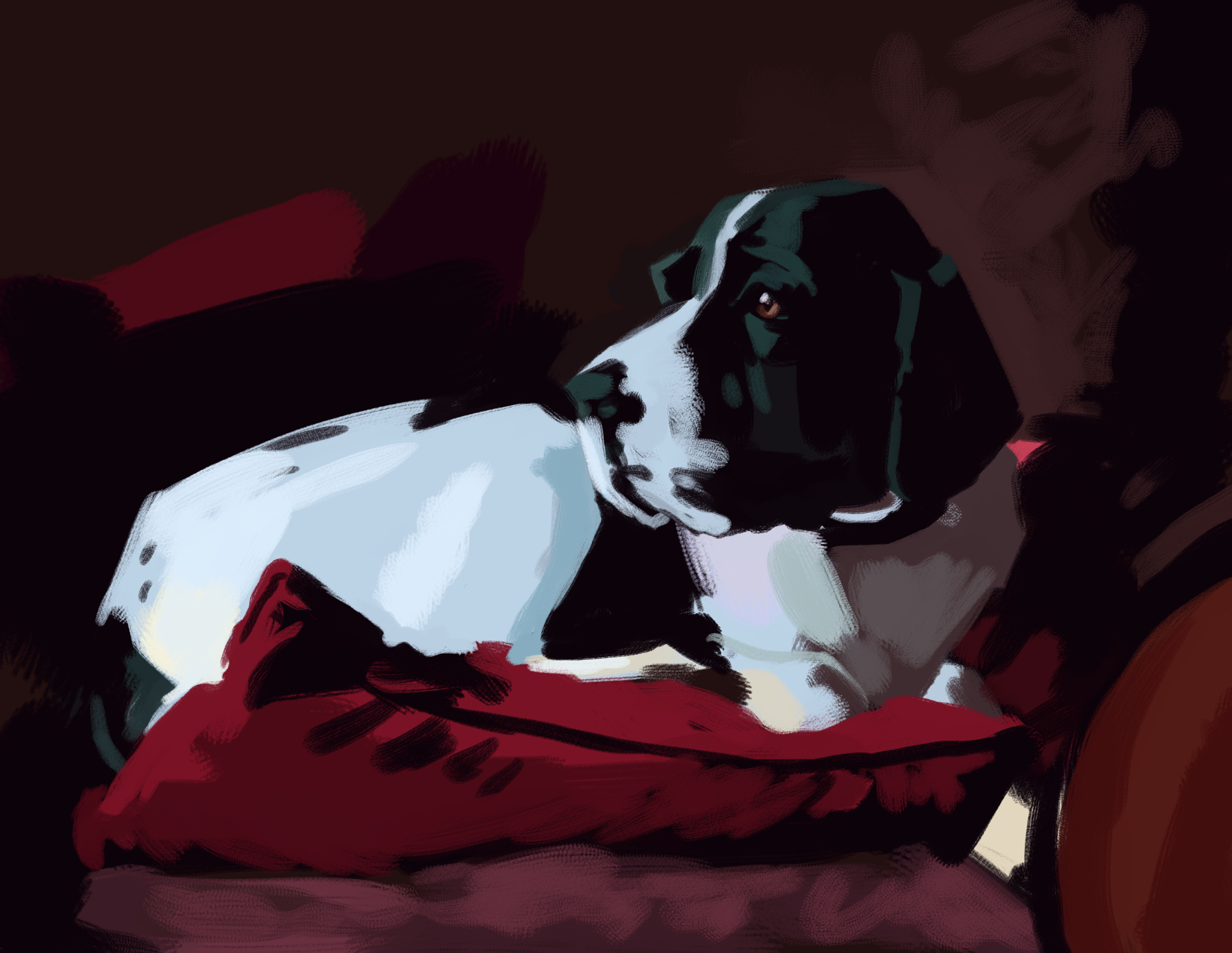
I had trouble getting the size and relationships between body and head right, as well as the positions of the paws, but staying with a big brush means you can paint over anything without losing much previous work. If you refine early and have to fix big shapes, it’s tempting to keep bad parts, or end up noodling around trying to salvage details you like and already spent proper time on. A recipe for frustration stew.
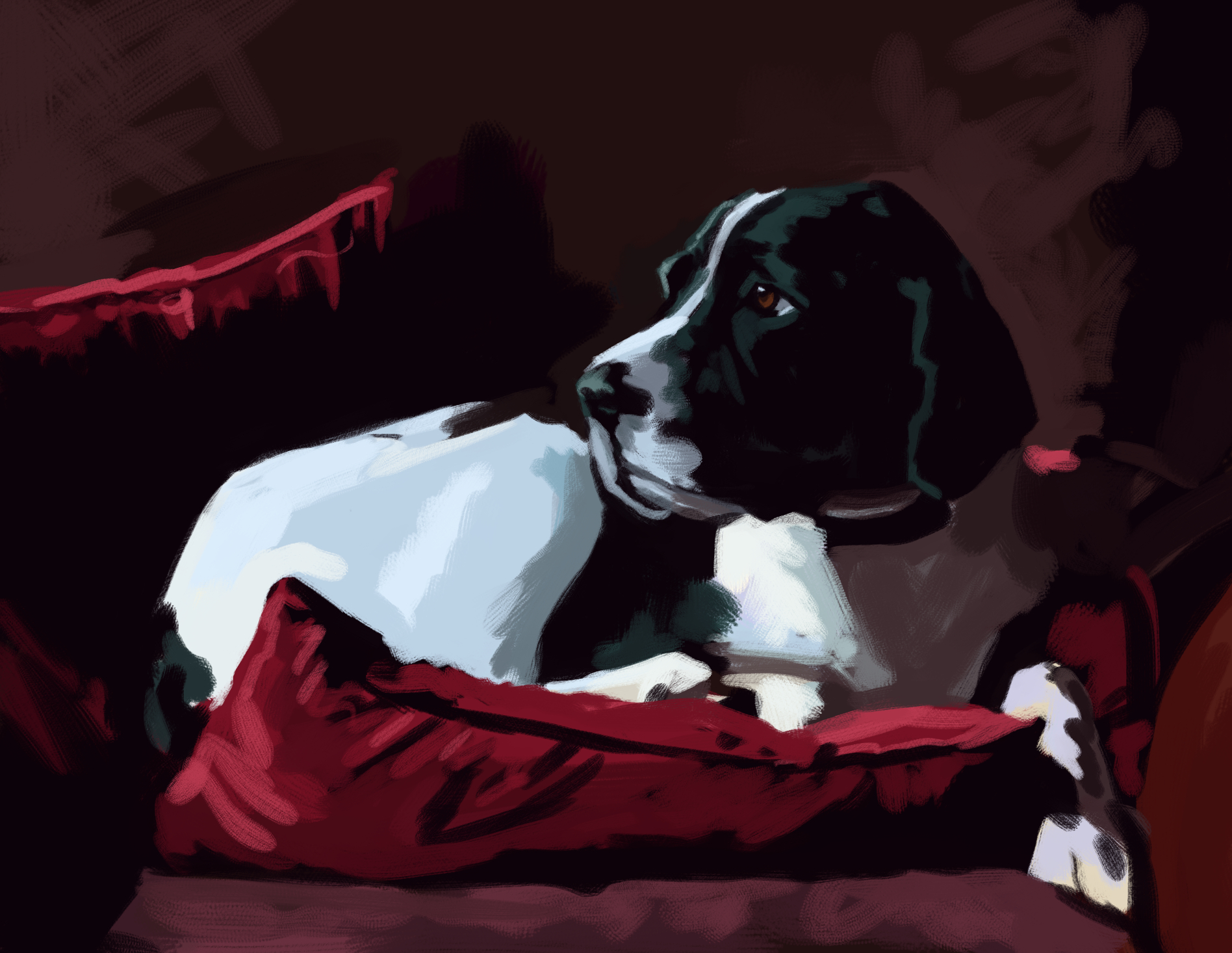
Once everything seems properly proportioned and in place, the first thing I do is increase the image resolution. My PC doesn’t perform well with brushes beyond a certain size, so I keep the canvas small until I’m done with the big ones. Even though I mainly approach it like traditional painting, creating art digitally still has many benefits. Hardware or software limitations and issues are not. However, as the whole image gets painted over again anyway, any blurring or pixelation from upscaling won’t remain, so no harm done. Finally time to pick those smaller brushes and an area to refine!
Which when it comes to animals, is almost always the eyes, as their depiction tends to make or break a portrait. Anything else can be off and possibly not matter much, but mess up the eyes and nothing can make up for that.
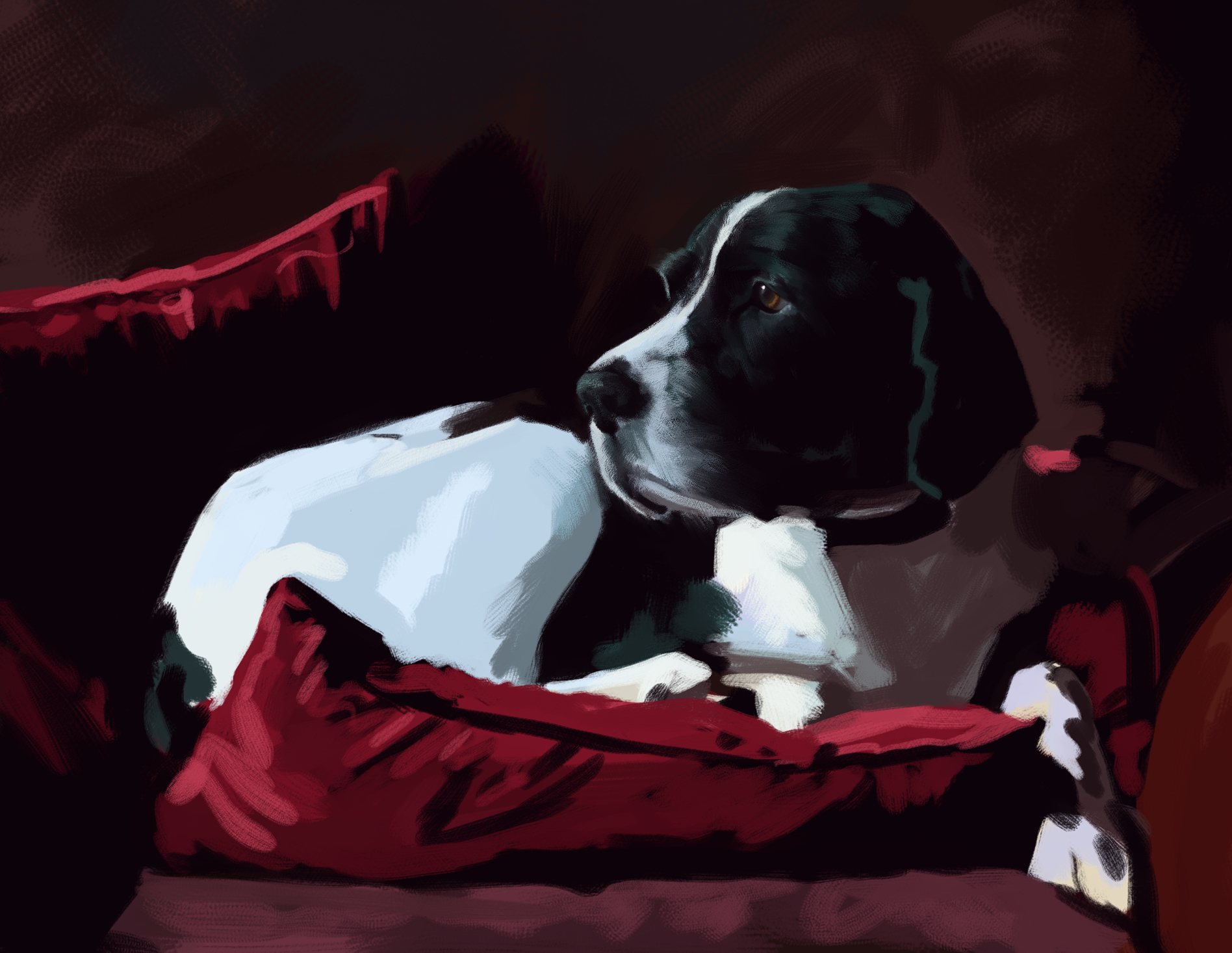
From there on out it’s really just moving from one part to the next, bringing each up to a similar level of detail. I say “just”, but this is actually where the bulk of the work happens, requiring a lot more time than the initial block out. It’s a reason I’m always reluctant to mention how speedy the first stage of a study comes together, since it can give a skewed impression of the time involved in a finished piece. It feels good to say “Look I can do this in just 45 minutes!”, but comparatively, the polish applied in subsequent hours feels like much smaller changes, despite taking a lot more time and ultimately being what makes a piece truly come together and impress upon completion.
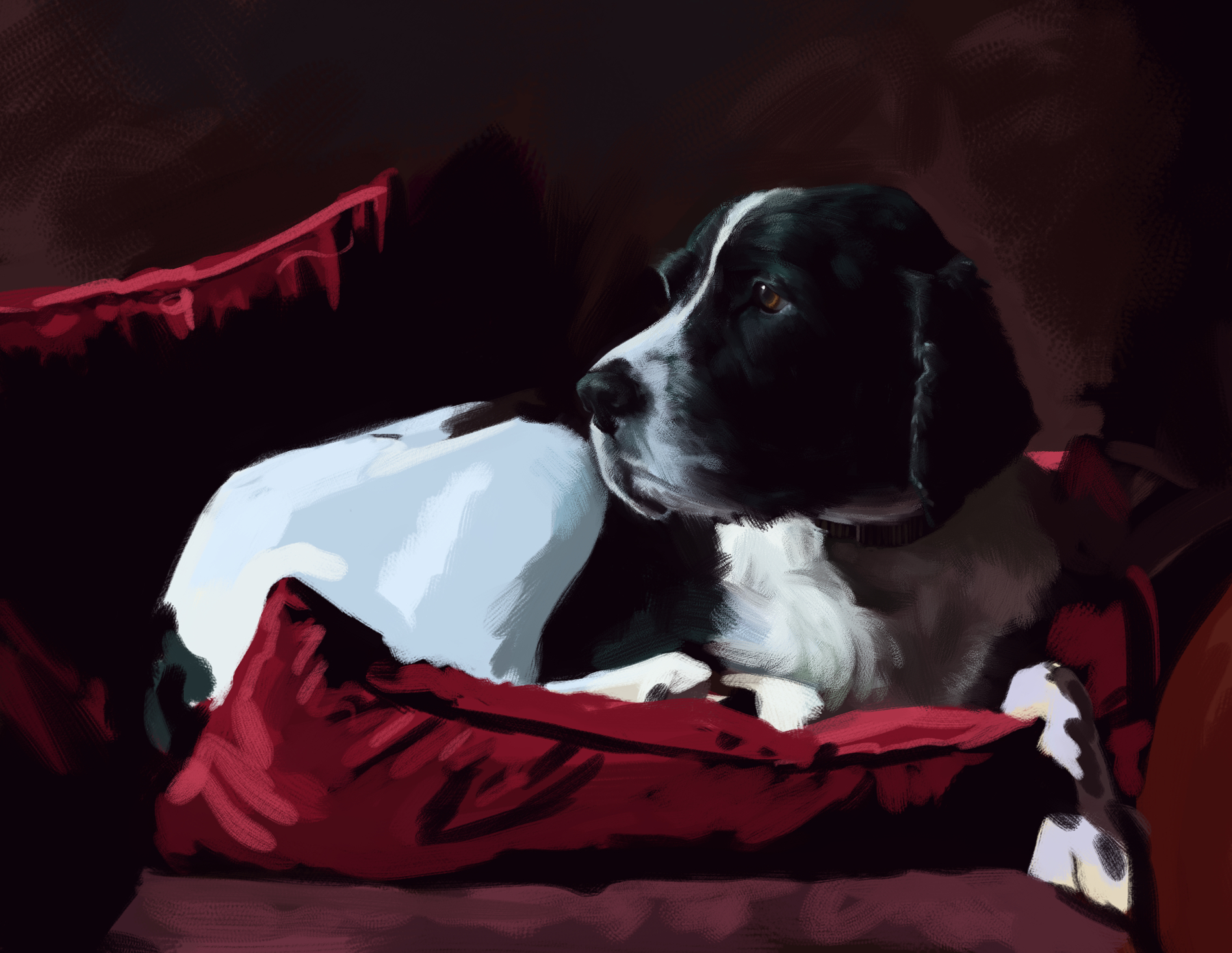
The main goal I had for this piece was to keep as much of a painterly, textured look as I could, hinting at detail more so than putting it in obsessively with gradually smaller brush sizes. Something that is especially easy to fall prey to when you work digitally and can zoom in endlessly with just a button press.
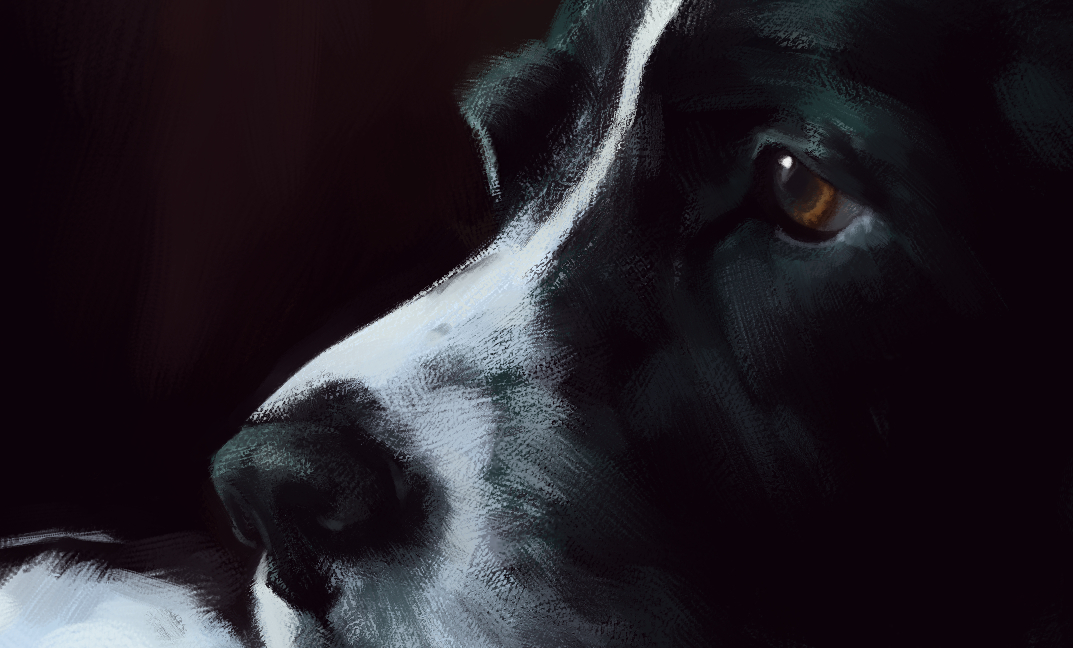
Another pitfall when doing studies from reference is to get too set on copying perfectly instead of staying faithful in a controlled, yet loose manner. Unless the reference image was intentionally set up to show specific things in specific ways and only those, there’s almost always something to change or omit, leading to a better painting. No matter how good a photograph you work from and no matter the amazing job the photographer did on it, it’s in your power to remove that stray white tissue, leave out that strong area highlight and overly prominent leather texture so they can’t steal focus from what’s important.
To me that is the point of creating art like this, to take in what I see and put it back on canvas, but with some of my love and care mixed into it. Looking at the finished painting I think I did well and hope these feelings transmit to my friend Cri and Duke would give me his bark of approval as well.
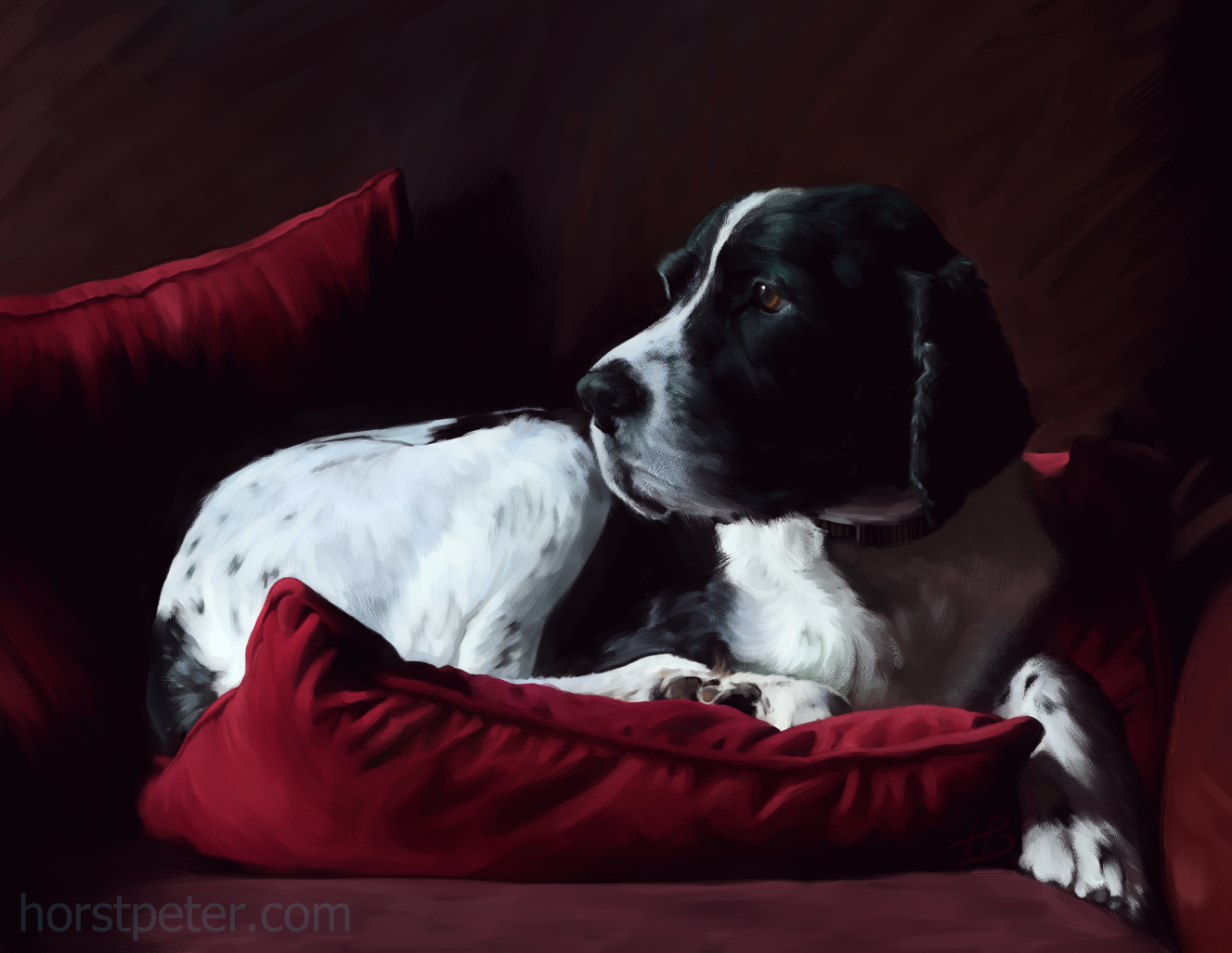
Progress pictures are nice, but a timelapse may be even better:
Painted in Clip Studio Paint Pro Ver. 1.13.2, with the oil brushes from Frenden’s set available here
If you enjoyed this article and would like me to write more of its kind, you can support and allow me to do just that over on ko-fi via that fancy floating “support me” button on the left.
Thank you,
Horst-Peter